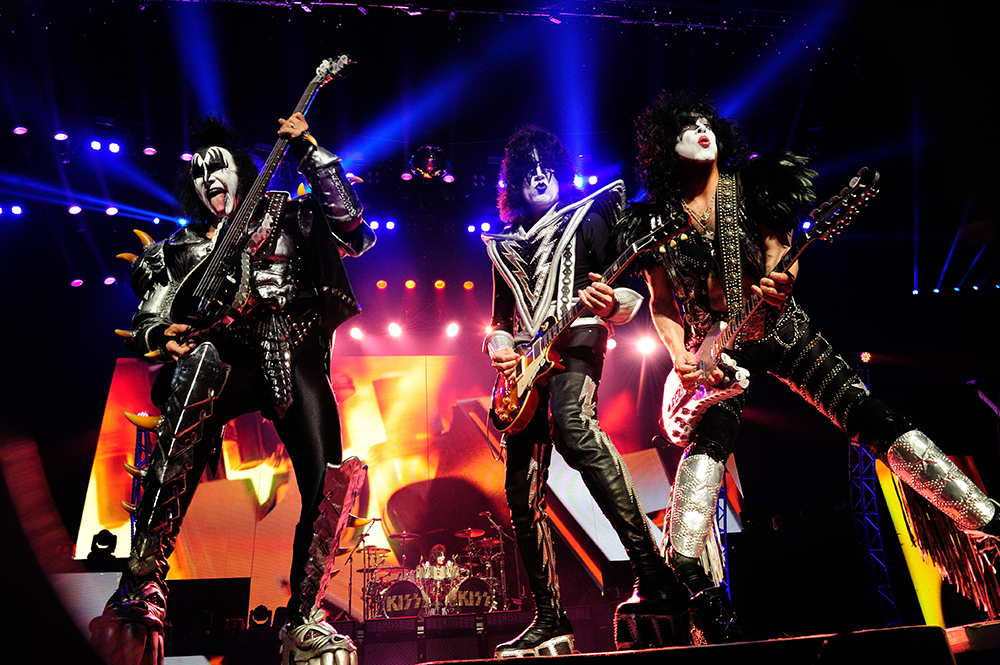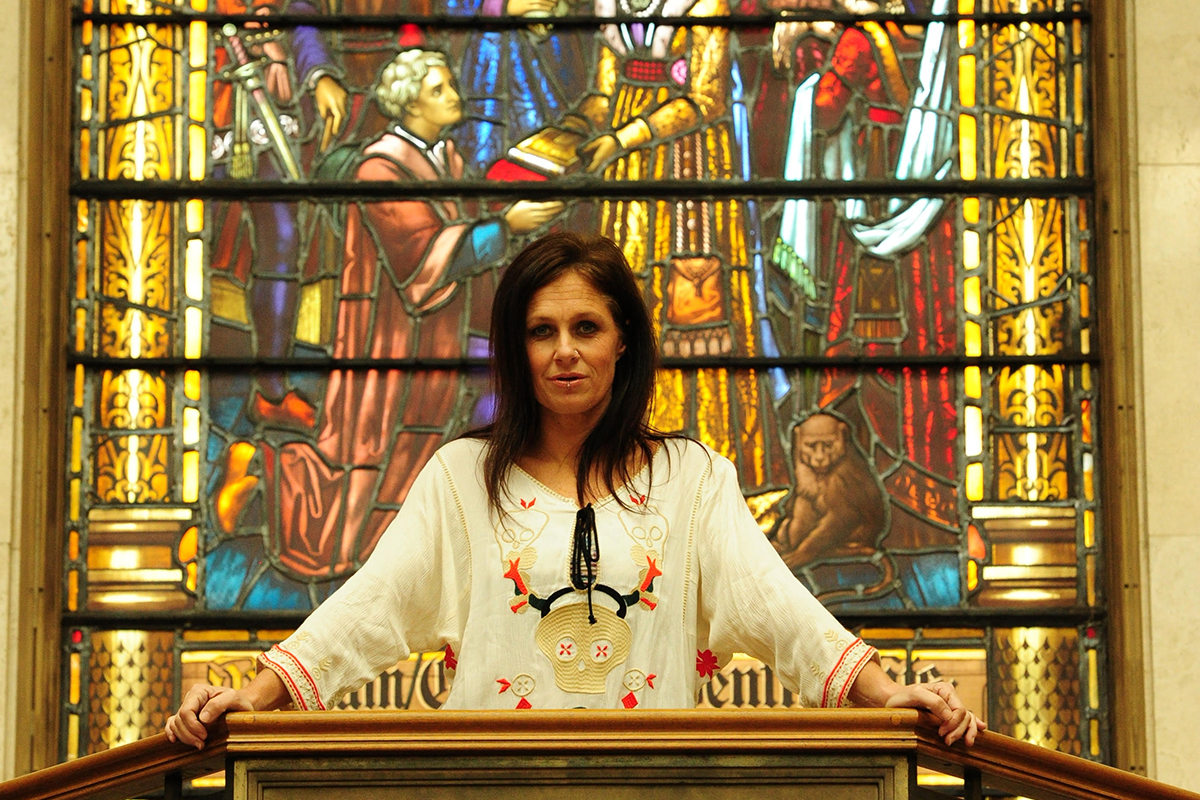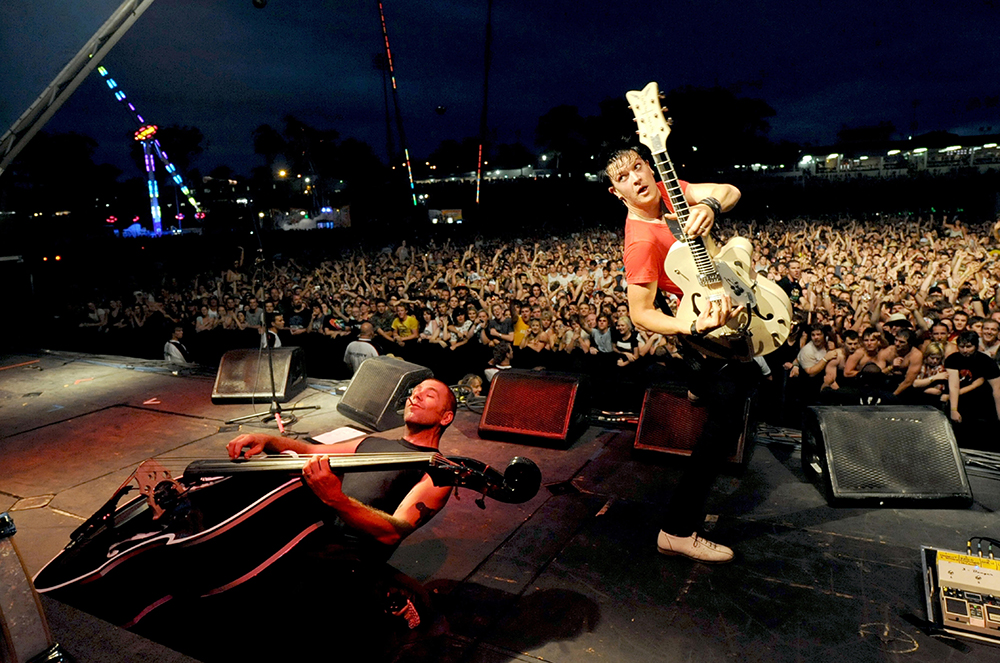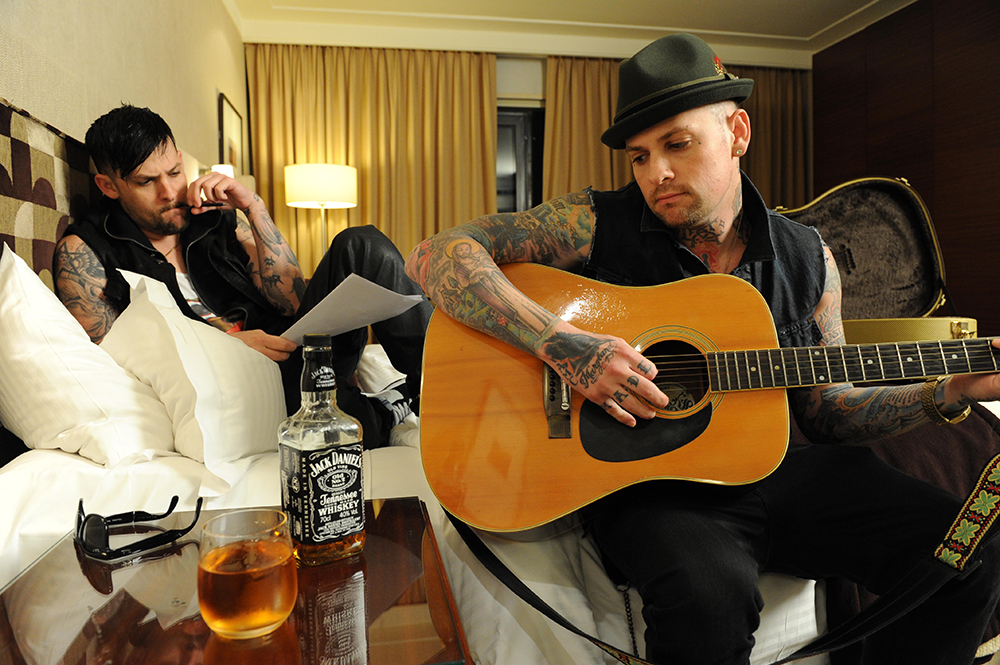At any rock concert, anywhere in the world today, the venue is illuminated by the screens of tens of thousands of smartphones, each one’s user hoping to capture an image or footage of their idols as a souvenir of a great night out.
But nothing anyone in the audience might catch, whether by good luck or good management, could hold a candle to the images captured by photographer Tony Mott over a four-decade career shooting some of some of the biggest music acts on the planet. An exhibition of Mott’s work, What a Life! Rock Photography by Tony Mott, is currently showing at the Powerhouse Casula Arts Centre and it’s a must-see as a as a reminder of the power of a truly great image – something we’re in danger of forgetting in the era of smartphones and everyone-as-a-photographer.
Representing a career as varied and comprehensive as Mott’s in 80-odd images and selected memorabilia might seem a foolish undertaking, but the exhibition, now on its last stop of a national tour organised by the State Library of NSW, gives it a good shot. Speaking to Hunter and Bligh, Mott says he’s learned it’s a good idea to ask someone else to help choose the best photos – in this case, Louise Tegart, former manager of exhibitions at the State Library.
“A lot of people say, oh, how do you pick?” Mott says. “That’s why I gave Louise that power. Unfortunately, I’m a bit boring, and when I pick my photos they’re always the same ones. It’s always good to get someone else’s eye on what they think is good.
“I more or less handed over the entire curating to her. Most people find that almost unbelievable, but I’m not precious about the photos. We did sit down and suggest certain things, so it was a combination of what I considered my best photographs and what she considered was important.”
The only restrictive criteria on the images included was that they had to have been shot in Australia. For that reason there’s a few from Mott’s collection that didn’t make the exhibition.
“There were no Prince photos in it, and there really should be,” he says. “And also there’s no Queen photos. A lot of that had to do with the original idea that every photograph had to be shot in Australia. My best Prince photos are from when I was on the road with him in Europe; a Sinead O’Connor photo that should be in there was shot in Europe.” (Images not in the exhibition can be found on Mott’s website.)
In addition to the images and memorabilia on display there’s a short documentary video featuring Mott and a number of performers he’s photographed over the years which is both illuminating, poignant and at times very funny – as you might imagine, focusing as it does on an individual who came to photography untrained, learned on the job and found himself touring the world photographing and partying with bands like The Rolling Stones and Queen.

Image of KISS by Tony Mott
Now recognised as one of the medium’s greats, the English-born Mott’s career as a photographer began almost by accident. Trained as a French chef, he worked in restaurants in the UK and Australia before landing a job on a cruise ship, touring the world, visiting more than 60 countries and developing a passion for photographing the people and places he visited. Initially he thought he might become a social documentary photographer (the travel images on his website, www.tonymott.com, are easily the equal of his rock images), until one night after a shift in a restaurant in Sydney he came across the late Chrissy Amphlett fronting The Divinyls in a nightclub in Kings Cross. Intrigued by the challenges of photographing the colour and light and movement of a live performance, Mott spent months turning up to Divinyls shows and honing his skills, until the band’s manager, who by now recognised Mott, asked to see the shots he had taken and offered him $20 to use one as a poster. Mott’s career as a music photographer was off and running. The Divinyls understandably feature prominently in the Powerhouse exhibition.
Despite the vibrancy of the Sydney music scene in the early 1980s, getting images published took an immense amount of hustling, and Mott was good at it; it was at this time he changed his last name from Moulds, after being told by a photo editor of one publication that it was a terrible name, to Mott, in homage to his favourite band, Mott the Hoople.
- Image of The Living End by Tony Mott
- Image of Good Charlotte by Tony Mott
Having forged a reputation as a fine recorder of live performances, Mott later turned his attention to portraiture and learned quickly it was an entirely different ballgame. But his style and skill developed quickly, following the same philosophy he’d taken to honing the craft of shooting live shows: Please yourself first.
Mott’s images – live and from the studio – have graced the covers of more than 500 CDs, been used more than 400 times as official posters, and appeared on the covers of more than 900 magazines. But identifying which shots have “it” and which do not is not a clear-cut issue.
“It’s a good question and it’s not easy to answer,” Mott says.
“In the age of film, you didn’t get a big percentage of comeback. When you’re shooting at night only 10 per cent of what you shot was usuable, so that cut down your choice to start with. And then for whatever reason there’s always the three or four that you just went, oh, wow!
“When you’re lucky and you do a great shot, like Peter Garrett or the Johnny Rotten shot, it picks itself. But it’s a combination of capturing the image of the musician that fits their image. And with portraits particularly, it’s very much – and this is going to sound a bit wanky – that you’re trying to capture their soul, and what makes the songwriter or the performer what they are.”
What a Life! Rock Photography by Tony Mott, opens officially on January 19 at the Casula Powerhouse Arts Centre, with a Q&A session with Tony Mott starting at 1pm. Admission is free and the exhibition runs until February 24.




